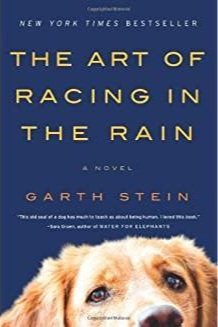How to Write Like a Dog
Meet Bernie, a dog with a unique personality and a mind of his own. In many ways he was my role model when I was writing Coop the Great.
How does one write like a dog? That’s the challenge I faced when I wrote Coop the Great. In my story, Cooper is an aging, cynical dachshund who has been through rounds of adoptions and foster homes, and eventually finds a new owner – Mike – who challenges Coop in unexpected ways. I wanted to tell the story in first person, meaning that I wanted to write it from Coop’s point of view, in his distinctive voice as if he was narrating the story.
So how does one write from a dog’s point of view? Here are a few of the approaches I used:Dogs have been a big part of my life, and each one had a unique personality. For example, Bernie, a poodle-terrier mix (pictured above), was full of energy and mischief. As a pup, he ran rampant about the house, chewing everything within reach – potted plants, covers off books, kitchen cabinet doors, and his very favourite delight – underwear stolen out of the laundry basket. He was an eager crotch sniffer, too. Anyone venturing into the house, was greeted with a muzzle in the crotch, not something everyone was comfortable with.
Coop bears some of those same qualities and habits as Bernie, and I am pretty sure I was inspired by his antics. But there have been other dogs, too, Freckles, Roxy, Benji, Molly, Lilah, and Haley to mention a few. Coop is a blend of them all.
What goes on in a dog’s head? What do dogs think and feel? Why do they behave the way they do? To write authentically as Coop, I needed to find out how dogs sense things and why they react as they do. I read several books non-fiction books. Two of the most useful were The Secret Lives of Dogs: The Real Reasons Behind 52 Mysterious Canine Behaviors by Jana Murphy and Power of the Dog: Things Your Dog Can Do That You Can’t by Les Krantz.
To find out more about shelters and adoption agencies, I volunteered for a time at Foothills Animal Rescue in Scottsdale, Arizona. I also toured the Winnipeg Humane Society. Both gave me a better understanding of what these agencies do and how they operate.
I wanted Coop to be a dachshund with its characteristic long body and short legs, and I needed him to face obstacles unique to his stature. On the advice of Suzanne Goulden, a friend and fellow writer, I experimented with Coop’s views. I wanted to see and feel what a small dog might so I crawled on hands and knees. Believe me, that was a revelation. Try it yourself, it you will. You’ll see knees, chair legs, the bases of cabinets, and the floor in new and interesting ways.
As I wrote Coop the Great and even afterwards, I saw dachshunds I’d never noticed before. I saw them in parks, in playgrounds, along the streets and in corridors, in my own city and those abroad. Every encounter offered grist for the writing mill. Inevitably their devoted owners were more than willing to divulge the details of their pet’s habits. One unique opportunity came while I was in Phoenix and heard about the annual Wiener Dog Races held there. Jo and I spent an enjoyable few hours cheering on the runners and mixing with their enthusiastic owners.
Once I started writing the story, I noticed dachshunds everywhere. Each provided insights into the breed’s qualities and characteristics. Here, my wife snaps a photo of one we saw in Turin, Italy.
Dachshunds in all types and sizes compete at the Wiener Dog Races we attended in Phoenix, Arizona.
Coop has a distinctive voice and personality, but I wasn’t entirely sure how to implement it. For inspiration, I re-read The Art of Racing in the Rain by Garth Stein. It’s a fictional story told from the point of view of Enzo, a philosophical, sarcastic dog who lives with Denny Swift, a wanna-be race car driver. I’d read the book years ago and found it memorable not just for the story line, but also for Enzo’s unique voice and sense of humour. How did Stein accomplish this feat? Although my story and characters were very different, re-reading The Art of Racing in the Rain set the tone for the book I wanted to write. It helped me discover Coop’s unique voice and purpose, too.





